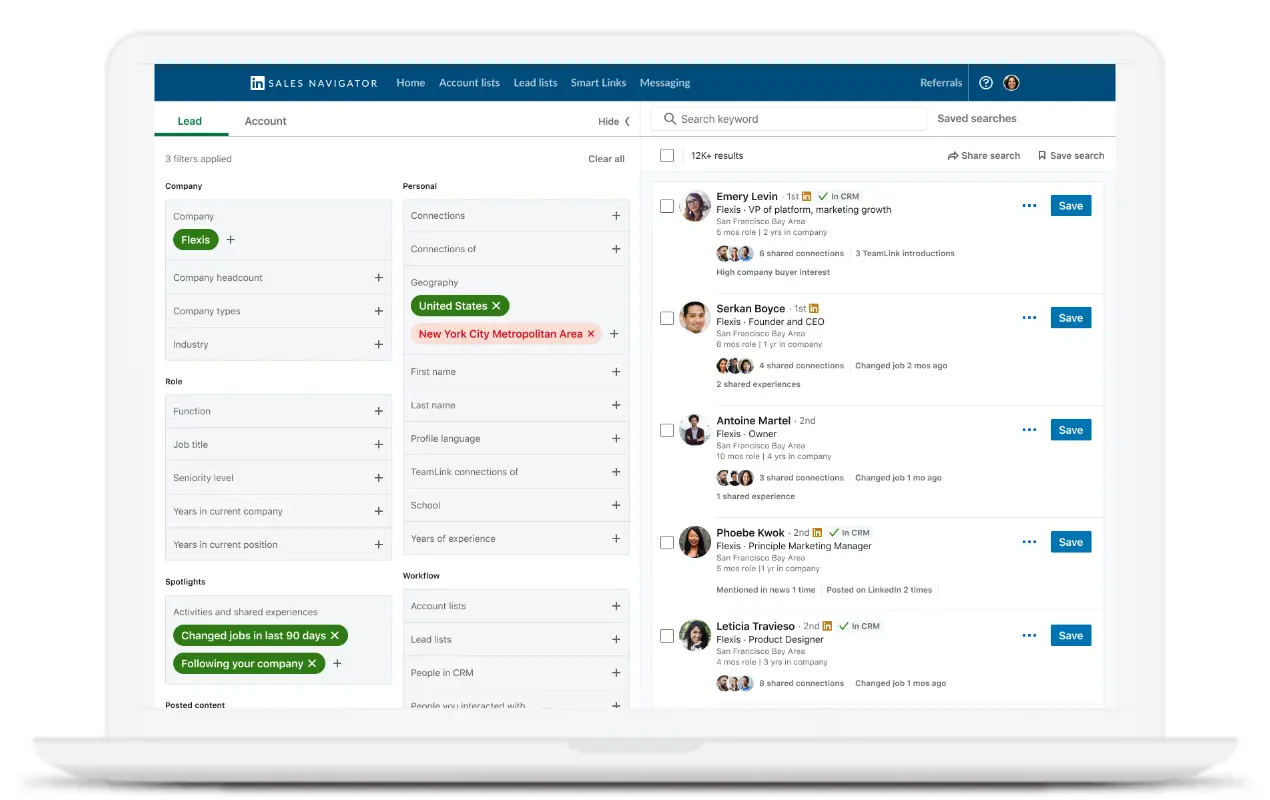
The Essential 5 Things To Do on Every Sales Call in 2023 Jen Samples January 23, 2023
Want better sales calls? Whether you are cold calling, giving an enterprise-level sales pitch, or simply building rapport with a potential prospect, successful sales calls all have a few things in common.
As a sales coach, I recommend doing five things when making a sales call. It does not matter who your potential customer is, what their procurement process is, or what product you are selling. You will close more deals by consistently making these steps a priority.
1. Great sales calls start with successful research
The truth is that many reps do not learn much about their prospects other than what their company requires them to put into their CRM. But without good research, you won't be able to make an effective sales call.

Research is more than verifying
Reps often use a sales call to verify information that came in as a lead, or to confirm answers that their SDR provided from the qualifying call. What this does is waste time.
Investing time to really understand who you will be having a conversation with and what motivates them, and learning about their market is what makes cold calls and warm meetings a success.
Start with the basics to maximize the upcoming conversation.
Use sales tools like Cognism and Linkedin Sales Navigator to verify potential stakeholders in the buying process. Make a list of three to six stakeholders who can influence the purchase decision.

Key stakeholders could be team members in legal, procurement, operations, finance, and strategy departments. Knowing what they value could potentially set the tone to get the next meeting or block the purchase.
Dig deeper to provide extra value
After identifying the potential key stakeholders, follow them and your main contact on Linkedin. Read their profiles. Comment on their posts. It's like making small talk at a trade show that is open 24/7 without even picking up the phone.
Many people will follow back, giving them the opportunity to learn more about what product or services you sell without the worry of being "pitched."
Go into the conversation with knowledge of their industry
A step in the right direction includes reading trade publications that affect your prospect, which will help you better understand what is happening in the world of your customer. Gather details that your competition may not think to ask or address on a sales call.
This allows you to go into the conversation confidently and achieve your goals easily. Industry knowledge shows your prospective customer that you recognize they are extremely busy and are jointly invested in their success. Incorporating this information into your carefully thought out sales call opening lines will boost your chances of success.
Read and watch to show you mean business
Read relevant blogs and vlogs. I recommend watching YouTube videos that a potential client or their competition has posted. You learn what potential customers think is meaningful for their customers.
Being armed with insight allows you to ask interesting questions. It also prepares you to highlight an example of relevant solutions.

2. Every sales call should have a plan
Great sales reps know that having a plan is critical, because they manage the sales process from beginning to end. Even if you have a sales playbook that covers how to address pain points and objections, you still need a plan for every conversation.

From figuring out the best sales call opening and nailing your sales opening lines to figuring out the key questions to ask to gain your prospect's attention—all of this should be carefully considered as you put together your plan.
Every sales call should have an agenda
Writing an agenda before making sales calls serves several purposes, even if you are cold calling. Doing so helps you organize what you want to talk about on the call, giving you a concise outline of what you want to accomplish, whether you are on the phone, on a Zoom call, or in person. Agendas prevent unnecessary talking and allow you to be prepared with the right answers, ensuring a successful sales call.
Give your prospects input into the agenda
Send the organized agenda to your prospect. It gives them an opportunity to add additional topics and minimize surprises.
Allies achieve success together
An aligned agenda positions you and your potential customer as allies in closing the sale. When your potential customer is an ally in furthering the deal, you become a business partner. You are now managing the conversation so that discussion points go in the right direction.
Present the agenda at the beginning of every call and position your main contact as an ally. "This is the agenda that John and I agreed would maximize our time today."
Positioning your main contact as an ally in the plan drives them to align with your discussion points. Otherwise they look like a jerk who is wasting their colleagues' time.

3. Every meeting should have a purpose
The purpose of the call should be reflected in your agenda. Providing an outcome-driven agenda gives your meeting purpose.

Sales calls should include "why," "what," and "desired outcomes" to be considered purposeful
Define "why" this meeting is happening = "This is a demo to see if basic business requirements are met."
Provide an "understanding" of efforts to be taken to get the desired outcome = "Stakeholders will provide input on their requirements."
Have a desired "outcome" = "At the end of this call, we will determine if there is a need for a second demo.
4. Invoke emotion
A great sales call should get a potential customer in their feelings. Feelings drive change. Invoking emotion on sales calls is a technique used to move towards a closed deal.

Ask "how do you feel" instead of "does that make sense"
"Does that make sense?" compels everyone to say yes even if it doesn't. "How do you feel about that?" forces your potential customer to give an answer with sentiment.
"Looks like standard reporting," shows ambivalence. "This will make my life so much easier," conveys positive sentiment and shows you what motivates them, which you can use on a future sales call.
See also: 5 Steps to Implementing a Conversational Growth Strategy
Get them excited with gifts
Gifting platforms like Reachdesk get prospects excited. Sending a gift card with a brief message like "Here's a cup of coffee on me" shows your potential client that you offer great service even before the call.
If you are meeting in person, it's easy to bring coffee for a morning meeting. Food gets people excited.

Speak with passion, listen without prejudice
Spark emotion by using emotional terms when asking open-ended questions. "What frustrates you the most about..." is a great way to begin when you are cold calling.
Listen intently to their answer. Be silent. Give them enough space to convey their thoughts. Great service can only be provided if you understand the point they are trying to make.
Use risk reversal language
Minimize the perceived risk of the purchase by using risk reversal language. Talk about your service level agreements. Highlight easy opt-outs. Show your potential customer that their risk is minimized by working with you.
5. Start with a closing mentality and end with great follow up

Closers know they will close
A masterful tip for closing sales: Assume the sale before picking up the phone. Envision how you will feel when this deal closes.
Imagine what your manager will say once it is signed. Write down what you will buy with your commission.
Don't wait until the next call to ask for the business
You never know if there will be a next call. Take the opportunity on every call to move towards a closed sale. "What will it take for XYZ company to make a purchase decision today?"
Look for opportunities to close. Schedule the follow up meeting while you are on the current call. Highlight the value of your solution every time.
Great follow up starts with taking notes
Before the sales call, make a copy of your agenda and save it as a "Conference Report." Use this outline on this document to write notes. Star items that you may want discuss on future calls.
Print the meeting transcript from conversational intelligence tools like Gong. Add key points you missed to the notes you already took. Document who attended the meeting and action items.
Document the details on every sales call
After writing your conference report, send it in a follow up email. Your email should outline talking points, action items, and next steps (with deadlines). This prepares everyone for the next meeting.
Notate key dates in your calendar. It allows you to stay on top of what the client owes you prior to a follow up meeting.
If a prospect said they will provide use cases by March 7th, schedule a task to remind them. An example of a reminder is "Hi Susan! I know you are extremely busy. Here's a quick reminder that we committed to review the use cases on March 10th. Can I still count on you to get them to me by March 7th?" In most cases, potential customers love this.

In conclusion, there are 5 things to do on every sales call
Gather as much information as soon as the meeting is scheduled.
Have a detailed plan for your sales call, from opening a sales call to its final moments.
Align with your prospect to set an agenda and define a purpose for the meeting.
Invoke emotion by asking "how do you feel," using words that convey emotion and by exciting your prospects through gifting.
Follow up with strong documentation and notate key dates to move the deal forward.
Make these five things a part of your sales call process to make your next call a success.
Frequently asked questions
Should I wait until the next call to ask for the business?
You never know if there will be a next call. Whenever possible, aim for a closed sale on every call.
How do I research prospects before a call?
Utilize tools such as Cognism and Linkedin Sales Navigator to compile a list of 3 to 6 key stakeholders who could influence the buying process. These stakeholders may include members from legal, procurement, operations, finance, and strategy departments. Being aware of their preferences and needs can be beneficial in either securing the next meeting and knowing what could block the sales deal from going through.
What are the benefits of having a sales call plan?
Having a sales call plan can be beneficial in helping to structure your conversation, ensuring you are able to effectively accomplish what you intend. Preparing beforehand not only provides you with a framework you can use to stay focused and on track during the conversation but also helps you avoid tangents. It also ensures you have your talking points and questions prepared.
Jen Samples is a seasoned sales professional with over 20 years of experience. She has a proven track record of exceeding sales targets and building strong relationships with clients. An expert in developing and implementing successful sales strategies and skilled at identifying and capitalizing on new business opportunities, Jen is known for being a trusted advisor for Enterprise clients. She is passionate about integrating sales, marketing and product strategies into a cohesive growth plan. Jen is currently CEO of 715 Edge, a boutique consultancy where she helps clients develop their revenue and marketing strategies for growth.
About Glass.io
With Glass.io, you can reach across the screen and help visitors make a buy decision. See exactly how visitors use your website in realtime, trigger a notification to the right sales rep when they show buying intent, and start a personalized conversation (chat or video) at the perfect moment.
Plug your leaky sales pipeline by engaging with your website visitors while you have their attention. Sign up for an account here.